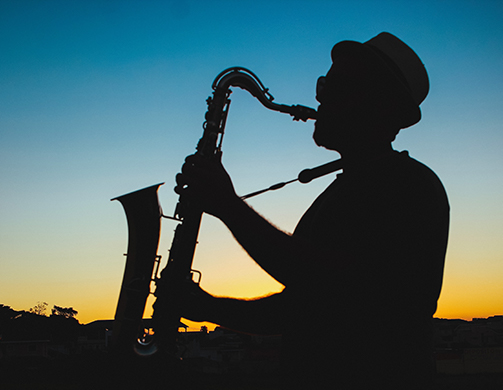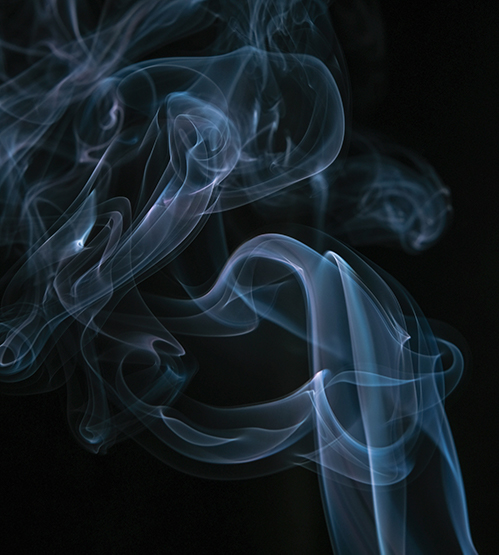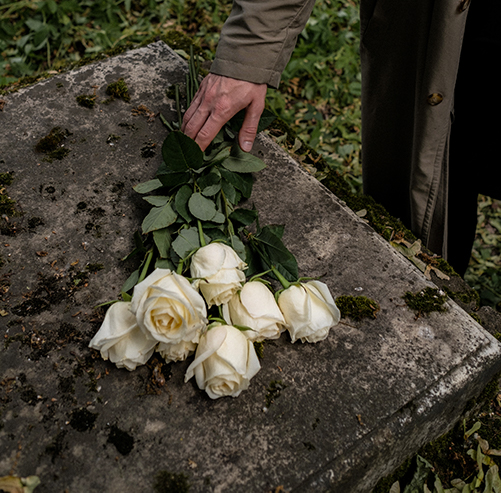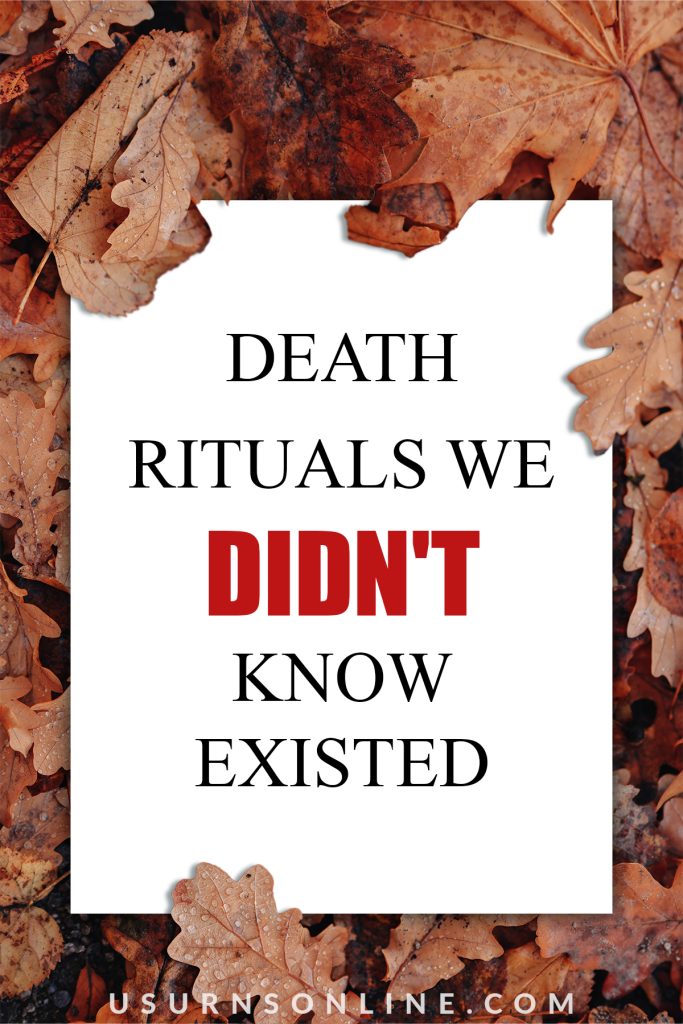Have you ever wondered how people in other cultures respond to, observe, and honor the death of someone dear to them? Because we definitely have. Death rituals are important facets of any culture, and thus are worthy of note.
From preparations made long before they pass to ‘celebrations’ that last for literal decades… Each culture has developed unique and extremely interesting (not to mention intriguing) rituals surrounding death. Some of them have developed slowly over centuries, while others have surfaced in relatively recent years due to necessity.
Whether you’re here out of just plain curiosity, or you wish to read up on how death is observed in a country or culture you perhaps plan to visit, we’ve gathered 12 unusually interesting death rituals from around the world. Let’s jump into it!
The Tolling Bells (Europe/USA)
Ringing bells to signal the death of an individual has a long, deep rooted history in many cultures, but was especially prevalent in European countries and, eventually, the United States.
Often, bell ringing or “tolling” was done not by individuals so much as by the local church, who was in possession of bells large enough to be heard by the entire city.
At certain points in history, the tolling bells were so precise that they could indicate the age, gender, and even social status of the individual who had passed. It is also noted in historical texts that in some villages you could determine exactly “for whom the bell tolled” due to the bell’s precise tone and quality.
If you wish to read more on the “Tolling Bells” or “Death Knells” as they were often referred to, you can do so here!
Other American Funeral Traditions
Here are a few other prominent American Funeral Traditions that you may find interesting:
- Wearing black, formal clothing — This practice originates from ancient Roman death rituals, but remains a cultural norm for most countries influenced by her far reaching empire, even over a millennia later.
- Photos — Pictures are often displayed during the services, depicting the deceased’s most happy times in their life. This is done through posters, albums, and even video slideshows.
- Music — Music is a very important part of American funerals. Standardly, funeral music is of a somber or religious nature. As more personal funerals and “celebrations of life” become prominent, funeral music is beginning to see changes in style and theme.
- Meals — Meals and refreshments are often served after the service, allowing the fellow mourners to reminisce and celebrate the life of the lost.
- Military — Military members are often honored with very special services consisting of several traditions. 21 gun salutes and an American flag placed over the casket are examples of this.
Related: Memorial Service Ideas
Sky Burials (Tibet)

Originating as early as the 12th century, Sky Burials or “Celestial Burials” as they are also called, are a highly closed death rituals practiced by Tibetan buddhists. While it was thought for some time that sky burials were a mere practical and ecologically friendly form of burial, religious scholars are now protesting this line of thinking.
Sky burials consist of disposing of the physical remains of the deceased by placing them in a designated burial site and allowing scavenger birds to consume the remains, thus carrying them “to the sky.” The bones are then ground by temple priests and are also offered to the scavengers. It is seen as unlucky if any part of the corpse remains.
While sky burials seem strange to those outside of the culture (the practice was even banned from the 1960s-1980s), it is an extremely sacred practice to those who live around the temples in Tibet. So much so, that not much was known about the ceremonies until quite recently when a foreigner was allowed to observe the ritual, so long as he did not take pictures or disclose too much detail.
There is still a lot of mystery surrounding the ceremonial ins and outs of this ritual, and most likely will remain so as it has for hundreds of years.
Famadihana (Madagascar)
Famadihana, also known as “the turning of the bones” is a funerary tradition of the peoples of Madagascar. During this sacred tradition, the bodies of the deceased are exhumed every five to seven years by their families, and their burial clothes or wrappings are replaced with new dressings.
It’s no occasion for sadness, though! Celebration ensues with dancing, drinking and feasting, and the exhumed bodies are hoisted on the shoulders of their family members and paraded through the streets and around their gravesite.
The belief behind this practice is that the souls of those who have passed do not enter the afterlife until their bodies have completely decomposed. Thus, Famadihana is an opportunity for their loved ones to “visit” with them, and for new members of the family to “meet” their ancestors. The tradition can last several days or even a week before the body is re-inturned.
Jazz Funerals (USA)

There are few funerary traditions that seem quite as cheery as the jazz funeral of New Orleans.
Burial methods have never been conventional in New Orleans, even at its earliest conception. Due to the city’s high water level and high temperatures, traditional European burials were never really an option, so elevated burials (in tombs raised above ground level) were quickly adopted.
The tradition of carrying the deceased from their home to the raised burial site developed originally as a somber occasion, with more traditional death songs or “durges” being played in procession behind the family. Over time, the return from the gravesite became a happier occasion, more in tune with a “celebration of life” and was characterized by happier music and dancing in the streets.
As the development of Jazz music took New Orleans by storm in the early 1900s and became much of the city’s identity, celebrations of life quickly adopted the cheerful beats and evolved into the famous “Jazz Funerals” of the late 20th century. Today, jazz funerals can be found in many corners of the world, far beyond the New Orleans city limits.
Related: Jazz Funeral Songs
Towers of Silence (Iran/Mumbai)
If the people of Madagascar have potentially the “best” relationship with the corpses of the dead (i.e. they do not fear touching it, seeing it, being near it), it could be argued that the zoroastrians of Iran and Mumbai have the “worst.”
The Towers of Silence, built by those who practiced the religion of Zoroastrianism, were large, round structures made of stone or brick and were designated areas to dispose of the bodies of the deceased. Similar to the sky burials of Tibet, the corpses were exposed to the elements atop the towers and consumed by scavengers.
The Zoroatsrians had (and still have) extremely strict beliefs on maintaining personal purity and cleanliness in life as well as in death. Anyone or anything that comes into contact with a corpse, including the earth, is seen as contaminated. Therefore, as little contact as possible is made with the deceased throughout the death rituals and only by specially designated priests.
While the towers of silence have been outlawed in many regions of Iran since the 1970’s, there are still areas of India where the practice takes place. The mass extinction of many species of vultures and carrion birds has made this type of burial ritual difficult, and it is predicted to become obsolete within a matter of years.
Death Beads (South Korea)
So imagine you wish nothing more than to be planted in the ground for a nice, traditional earth internment when you die. In South Korea, that is all well and good (albeit expensive), but it is also…temporary?
Yep. Temporary. The government of the small yet densely populated asian country was faced with a difficult decision at the turn of the 21st century, as they realized that their graveyards were quite literally running out of space. As a result, a law was passed in 2000 stating that while earth internment is still an option, families of the deceased are required to remove the bodies after 60 years.
With the 2000 legislation, cremation took a sharp rise in popularity, but even still South Koreans sought a more personal way to preserve and honor the remains of their loved ones. Enter death beads.
Death beads aren’t so dissimilar to the North American practice of turning cremation ashes into diamonds or precious stones. The process is completed by artisans who transform the ashes into beautiful, colorful beads to be kept in a vase or traditional container for yearly, family funeral rites.
This practice is quickly becoming the most popular choice for South Korean families when they lose a loved one.
Smoking Ceremony (Australia)

While the smoking ceremony is a crucial part of many Aboriginal rites in Australia, its most important function is as part of the death rituals for tribal members.
The smoking ceremony actually takes place in the deceased’s home, where it is believed to drive their spirit from the body and into the afterlife. The body is not inturned immediately, but instead is left in the home on a raised bed while families (and often the community) will sing and dance around it for several days.
The Aboriginal people take the smoking ceremony very seriously, as they believe the spirit of the departed will be trapped and even haunt them if it is not properly guided to the afterlife. Many portions of these ceremonies are also extremely sacred to them, and non-indigenous peoples are not allowed to participate in any manner unless specifically invited to.
Tearing clothing (Jewish)
In Jewish tradition, Kriah or “tearing of the clothes” is used to signify that an individual is in deep mourning after losing someone close to them. This tradition dates back thousands of years, and is meant to be an outward display of the “tear” in the mourner’s heart.
In more modern times, this ancient tradition is often substituted by wearing a black ribbon on the clothing. Wearing this ribbon on the left side, near or over the heart, shows a direct lineage to the deceased, whereas wearing it on the right side is for all others.
The torn or cut fabric or the black ribbon is then worn for a minimum of the seven day period known as Shiva, with exceptions for holy or festive days. Many continue this mourning period for up to thirty days, which is known as Sheloshim.
Funeral Bagpipes (UK/IR/US)
While funeral bagpipes are common across the UK, Ireland, and America their origins are rooted in Celtic traditions dating back hundreds of years. In fact, bagpipes were played for most important Celtic celebrations including births, weddings, and traditional festivals.
So if funeral bagpipes are a Celtic tradition, then why are they often played at specific American funerals such as that of firefighters and policemen, you may ask? Well, it all boils down to immigration history.
During the great migration from Ireland following the potato famine of the 1850s, many Irish faced heavy discrimination and weren’t allowed to apply for most work positions. The only jobs they were allowed to work were the most dangerous and detested — that of firefighters and policemen.
Over time, it became tradition for bagpipes to be played at the funerals of such public servants, regardless of national origin, and it is a custom that remains today.
Navajo Taboos (America)
While Native American death rituals are widespread, complicated, and vary greatly from tribe to tribe, some of the most interesting stem from Navajo beliefs.
The Navajo have a very interesting relationship with death in that they greatly respect its power, and as a result are quite terrified of it. This great fear has developed over centuries into several taboos surrounding death, one being that you are not allowed to speak the name of the individual once they have passed.
To speak the name of the dead is basically an open invitation for death and evil spirits to come knocking on your own door, so to speak. Since many Navajo believe that after death a person becomes a “Chindi” or a spirit made up of the negative aspects of the soul, great measures are taken to not anger or invite these spirits to linger around them.
While some tribal members have adopted more modern beliefs and customs about death, many remain faithful to their ancestral beliefs.
Throwing Flowers onto a Grave (Worldwide)

Throwing flowers on a grave, while not unusual, is arguably one of the oldest death rituals provable by archaeological evidence.
Gravesites excavated from civilizations dated to several thousand years B.C. have provided pollen samples and fossilized remnants from many different wildflower varieties. These wildflowers were undoubtedly used to adorn the final resting places of the deceased.
The ancient Greeks also placed major importance on the use of flowers in burial, especially that of fallen warriors. They believed that when the flower seeds took root over the grave it meant the warrior had finally found peace despite his violent end.
This beautiful tradition has stood the test of time, and for good reason. Flowers are known and loved for their beauty and sentimental value, and are found in almost every corner of the world, thus making them the perfect tribute to honor those we’ve lost.
Read Next: Traditional Funerals Are the New Alternative


